A cold weather camping tips checklist will make your next trip more enjoyable, and safer. Learning the basic tips set by the experts is essential to ease the effects of harsh weather on your body.
Nothing beats the smell of pine in the calm of an alpine lake or a clear sky with stars against snow-covered mountains. But even the most spectacular views won’t make up for a miserable night of camping in cold or freezing weather.
Whether you’re cross-country skiing or snowshoeing, don’t be unprepared. Get the equipment you need to stay warm and endure these extreme sub-zero winters.
Here’s how to make your adventure more about comfort and less about fighting the cold.
Cold weather camping tips checklist
1. Always check weather conditions and risks

The first element of your cold weather camping tips checklist is, obviously weather. You should know beforehand if you need to get ready for extreme weather or just for a chilling night.
It’s necessary to know what’s awaiting you before leaving. This is the golden rule for any outdoor activity: check the conditions.
In addition to knowing the extreme temperatures you may face (think about desert fluctuations in cold weather), keep up to date on approaching weather systems and weather trends for the season and region, and research recent changes in terrain, trail closures, or other similar hazards.
Remember to contact the nearest ranger station for updates. Always make a travel plan and inform those involved of your travel plan and expected return.
2. Secure your campsite and flatten your sleeping area
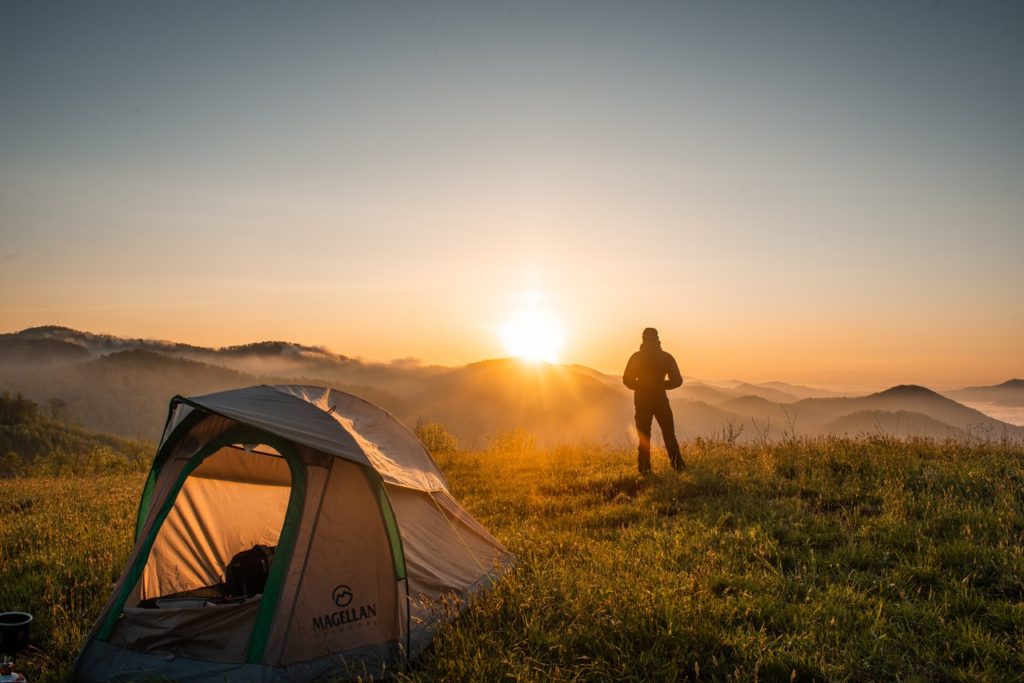
Once you’ve found a reasonably dry, flat, weather-protected spot, pitch your tent. If conditions permit, remove the snow to expose the soil and flatten the site with your tools or boots.
Get into your tent and use your knees to flatten the surface of the ground where you will sleep.
“Don’t wait until later to do this,” says polar explorer and cold-weather expert Eric Larsen. “Once the snow has melted and frozen again, it’s hard to handle.
You can also create a shallow trough so you don’t rollover. This shaping technique reduces the amount of ambient space and potential heat loss due to exposure to the cold, which could make the night miserable or subject an individual to the early stages of hypothermia or frostbite.
How does your body lose heat?
By evaporation:
Evaporation causes a cooling effect. The body loses 85% of its heat through perspiration (sweating) during intense exercise.
Wet clothing through perspiration and increased breathing also cause a decrease in body heat.
Radiation :
Radiation causes heat to move away from the body. The body can lose more than 50% of its heat through radiation at temperatures below 20°C (68°F).
Conduction:
Conduction is the transfer of heat through physical contact. Conduction occurs at 20°C (68°F) and is responsible for the loss of body heat when sleeping on the cold ground.
Convection:
Convection occurs when a heated fluid (liquid or gas) moves away from a source. Take a hot cup of tea as an example.
The rising steam escaping from the cup indicates the movement of heat when the hot water turns into carbonated water (wet steam).
3. Bring a closed-cell foam mattress with closed-cell insulation
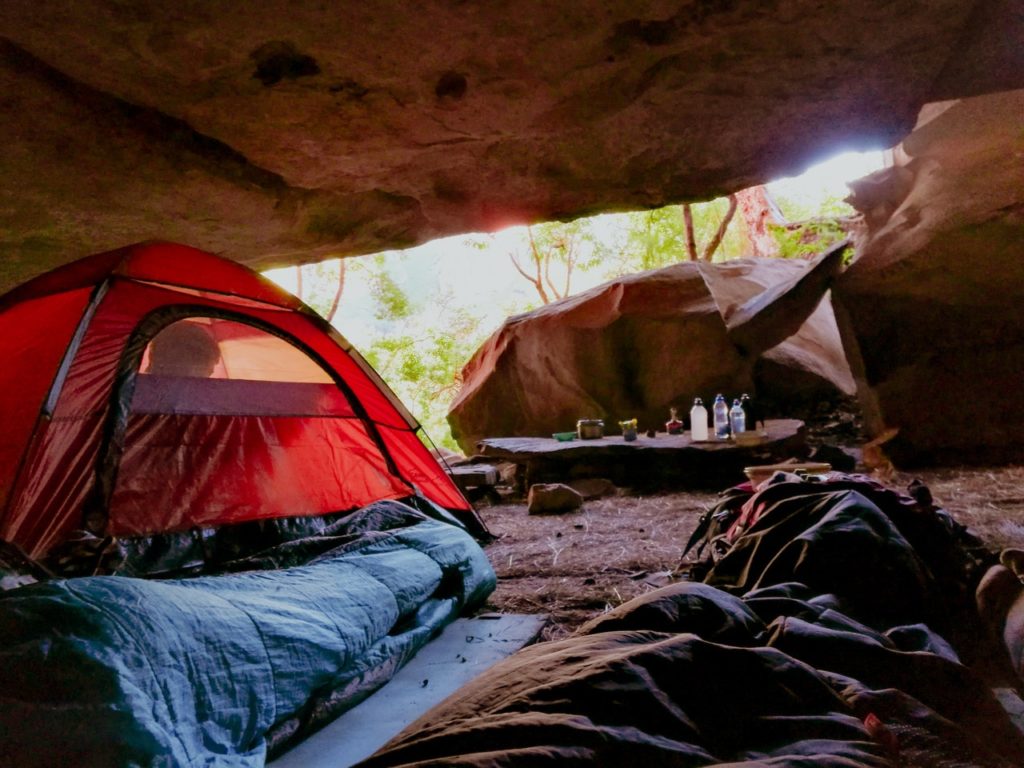
Conduction is responsible for the heat loss that occurs when sleeping on the cold ground, and even a “warm” sleeping bag in cold weather is a cold bag with no quality insulation cushion underneath.
The majority of self-inflating air mattresses prevent the passage of heat up to a temperature of about 30°F. To make your mattress comfortable, first install a closed-cell foam cushion (or CCF), such as the Therm-a-Rest Basecamp Self-Inflating Foam Camping Pad.
This aluminized and coated cushion is very durable and lightweight – we’re talking less than 19°C – and its R-3.5 rating (detailed below) is sure to keep you insulated.
You only have to lay your self-inflating mattress over it. Some experienced campers will also recommend putting the CCF cushion on your air mattress.
Sleeping mattress ratings: What is an R-value?
An R-value refers to the ability of an insulating material to resist the flow of conductive heat. The higher the R-value, the more efficient the mattress is in terms of thermal insulation.
As always, field testing is the only proven method for hiking equipment. Before you make your purchase, consider key features such as weight, compressibility, and comfort of a mattress.
4. Insulate your tent by reducing the ambient space
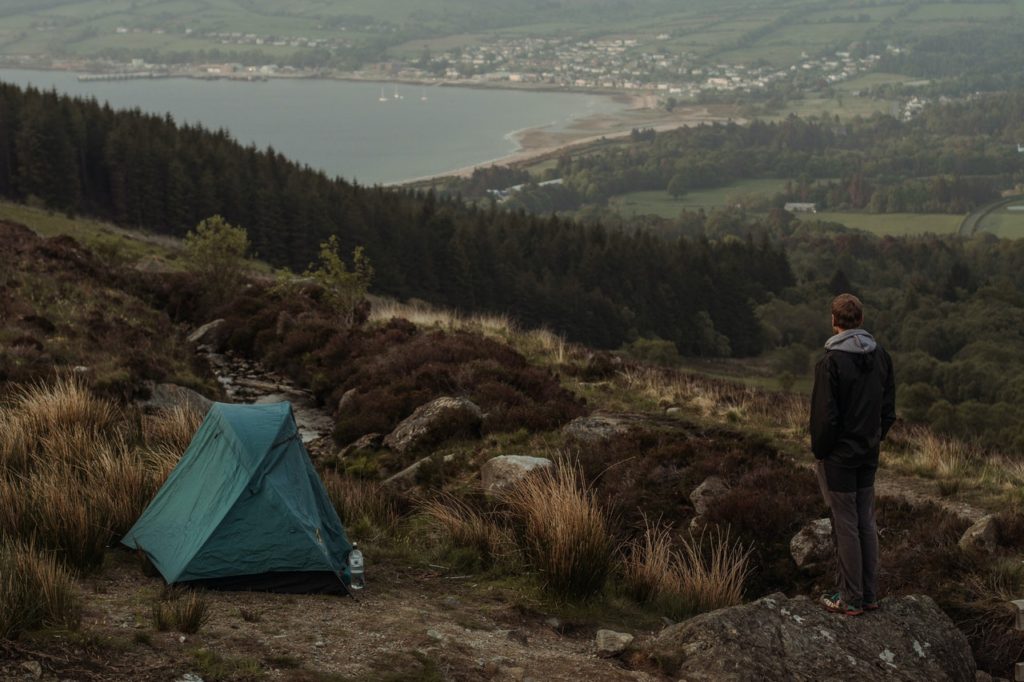
Buddy Up:
Place your partner’s cushion next to yours, or better yet, reduce the space even more and connect your cushions with a big Agnes pad coupler.
Think like a pack rat:
Place your gear bags and extra equipment around the inside perimeter of the tent for better insulation.
Tinker with the Radiation Barrier:
Create a radiation barrier by sticking a a Mylar blanket to the ceiling of your tent. These blankets are inexpensive and can literally save your life.
However, if you notice excessive condensation inside your tent in the morning, run the end of the space blanket over it. Excess moisture is a common problem with all camping gears.
Is body warming effective?
Yes, body warming is definitely effective for staying warm in cold weather and preventing heat loss.
Let’s take a lesson in thermodynamics: The greater the temperature difference, the faster the heat transfer.
By decreasing the surface area of the body exposed to cold air and increasing the surface area exposed to heat (another camper), two people can decrease the speed at which they lose body heat.
5. Warming up with a hot water bottle

If you put an uninsulated stainless steel hot water bottle in your sleeping bag at night, it will radiate heat like a sauna stone.
Try to place your makeshift water heater near one of these critical areas: the heart, the inner thigh (near the femoral artery), and the neck (near the jugular).
Don’t like stainless steel? Choose a BPA-free material. Unfortunately, harmful chemicals can seep into the water when a material is heated, so 100% stainless steel bottles are preferred.
A word of warning: Not all metal water bottles are made of stainless steel, so check the labels. Look for the 304 or 18/8 food-grade stainless steel.
6. Store your boot linings in your bag

With the possible exception of morning coffee, nothing hurts more than sticking your feet in frozen boots after waking-up.
Your body gives priority to the warming process, so keep your hands and feet warm to conserve energy.
Invest in a synthetic blend or high-quality wool socks to reduce moisture and manage odour. (Don’t forget gloves!)
7. Don’t breathe and don’t dig deep into your bag
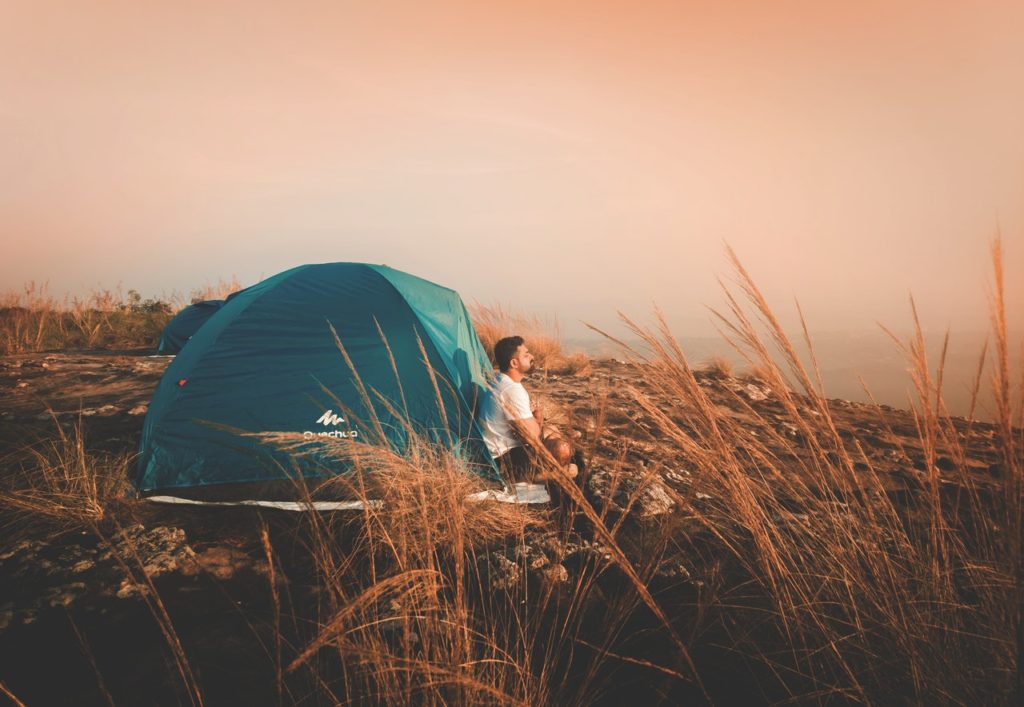
“The moisture from your breath will be trapped in the bag,” says Larsen. “Instead, tie the collar and close the hood around your mouth and nose so that you have an air hole to breathe through”.
This is particularly the case if you are using a down sleeping bag. Note that condensation is fatally deteriorating to down sleeping bag.
A wet bag loses a lot of its capacity to stop the passage of heat and takes time to dry, which will surely put a stop to your adventure.
To get maximum bulk or softness, shake your bag upside down. This technique redirects the down to the top half of the bag, near your center, where heat retention is most important.
8. Wearing the right clothes for sleeping in cold temperatures
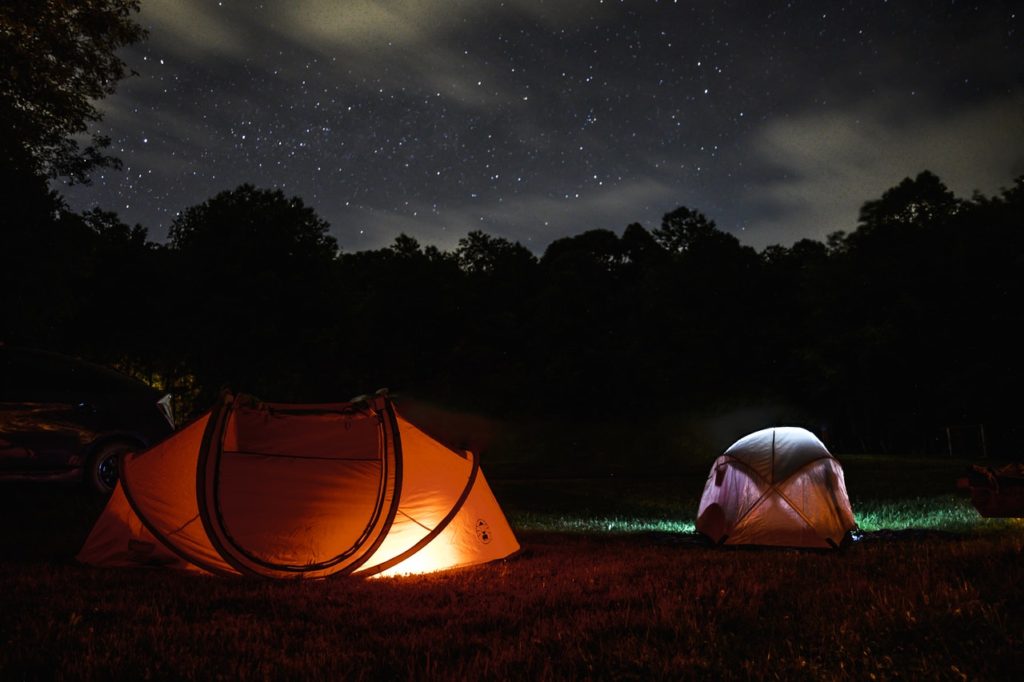
This is an obvious point of this cold weather camping tips checklist. Nevertheless, certain details are to be listed about your clothing.
Some say that sleeping naked in a sleeping bag will keep you warmer. This is simply not true. For temperatures below 30°F, make sure you have the proper base layers:
Avoid clothing that is too tight (socks, underwear, gloves) which can restrict blood circulation to the extremities.
Avoid running too hot (moisture will be trapped in your bag and cause a general drop in body temperature when you cool down).
Wear synthetic fabrics or wool.
Bring warm socks, finger gloves, and a soft hat.
If you’re hot while running, you can use a vapor barrier to prevent perspiration from reaching the base of your bag.
If you wake up with recurring condensation, ventilate your tent through a small opening. Hot or cold, whatever you do, dress for the occasion and leave your cotton clothes at home.
Why are cotton clothes bad for camping?
Backcountry experts say cotton kills, but why?
Cotton clothing does not wick away moisture, can lower your body temperature, and acts as a carrier for bacteria.
Materials that let air in and sweat out, such as polyester are designed to redistribute moisture by capillary action, whereas cotton is easily saturated like a sponge.
To stay warm, avoid silk and cellulosic fibers such as cotton, use strategic layers, and opt for synthetic fabrics.
9. How to manage camping under the tent on windy nights
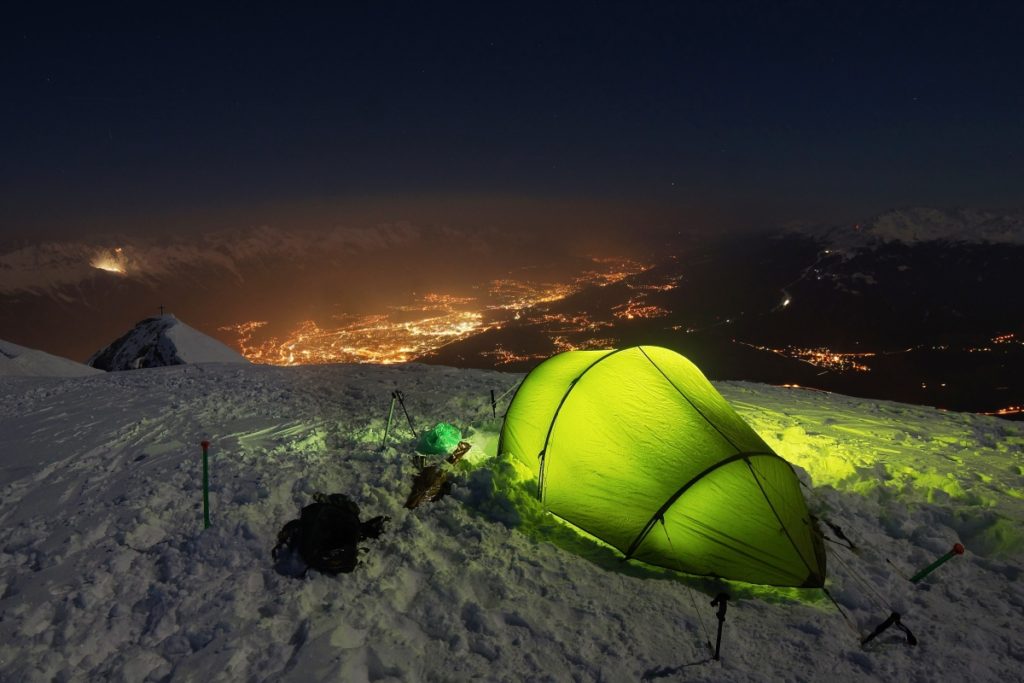
High winds? Sleeping in shifts. “Someone will have to check the tent setup every few hours,” says Finnegan, a cold-weather expert.
“If you wait too long to tighten a rope (because you don’t want to leave your warm bag), the damage to the structure will be impossible to control.
Think about it: The less gusting surface area that cold air and wind have to push against, the better.
Opt for a tent with a maximum wind index if you like to venture into unpredictable wind conditions.
If the wind direction is stable, make good use of it: Direct the narrowest side of your tent into the wind to reduce the exposed area.
Consider bringing grooved wind-resistant pegs if gusts are a real concern. If a tent loses its functionality, it can be a huge financial loss and put your safety at risk.
10. Eat a high-calorie midnight snack

“If I wake up cold in the middle of the night, I’m running down the Strawberry Clif Shot Bloks ($2 for six) to power my engine,” says Larsen.
Your body runs on fuel, so fill it up. Choose sugars, fats, and carbohydrates. The closer you get to bedtime the better, especially if your meal is high in fat.
Your body process protein thenfat and takes longer to process fat than carbohydrates.
Therefore, choose foods with a high caloric density such as chocolate, cheese, and nuts. A hot meal requiring minimal preparation just before bedtime will give your body an extra boost.
11. Prevent spills on your dry equipment – Try a reusable straw

Nothing would be as upsetting as inadvertently pouring liquid on your dry equipment (after dehydration).
Hydration is essential, so keep a reusable straw near your water bottle to drink freely in the middle of the night.
Choose a material that is very resistant and easy to disinfect, such as stainless steel.
Some hikers even use straws to carry spices for their cooking needs. Simply load the straw with the desired spice, seal the ends, and voilà!
You’ll be preparing gourmet meals in no time at all (Note: make sure your cayenne pepper is out of the straw before trying to drink through it).
12. Removing morning frost from your tent

Water vapor often condenses on the inside wall of a tent, even if the door is cracked. Once the ice has melted, it will permeate your equipment.
Protect your belongings for frost by placing them in plastic bags, and brush away the ice formed into piles to throw it outside before becoming liquefied by heat.
Don’t forget to dry your gear daily if conditions permit. If you’re outdoor all day, turn your tent over and let the sun or the dry wind blow away any remaining moisture.
13. Don’t hold your pee at night
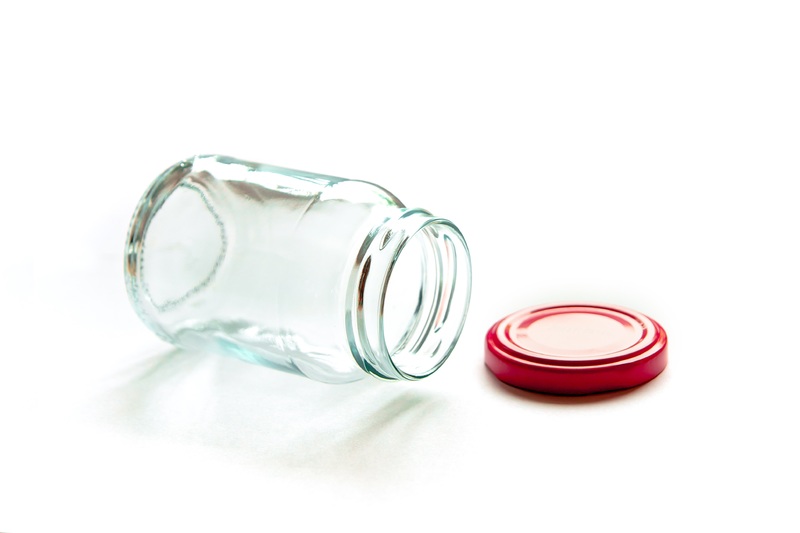
This step of the cold weather camping tips checklist is regarding the campers’ organic waste. The subject is to be addressed differently during extreme weather when leaving your tent can be dangerous.
If nature calls in the middle of the night, don’t procrastinate. It makes you colder in the long run because your body has to burn calories to keep the urine warm.
Too cold to drop the hole? Boys should consider using a designated pee bottle (mark it with tape or other distinctive features).
For women, modern emergency equipment can make life warmer. A pee funnel will save you in those situations. Use it to pee in a bottle as well.
Feeling thrifty? Use a jar with a wide opening. Pro tip: try to practice your technique in the shower so you can practice a few times before the show.
Difficult times call for severe measures, and a hot pee jar, although not appealing, can be used for warming. Of course, seal the lid tightly and check for leaks.
The jars can also be emptied and reused for packing waste or feminine hygiene products.
14. Insulate your water bottles

At high altitudes and in extreme weather conditions, the risk of dehydration is higher. Drinking frozen water will plunge your body temperature, but it also makes rehydration harder.
“I go for Granite Gear’s air coolers to keep my water from freezing at night,” says Larsen. These insulators keeps 95% of radiant heat and insulate hot liquids. Maintain your body temperature and stay hydrated by sipping something warm.
15. Protect your electronics from the cold
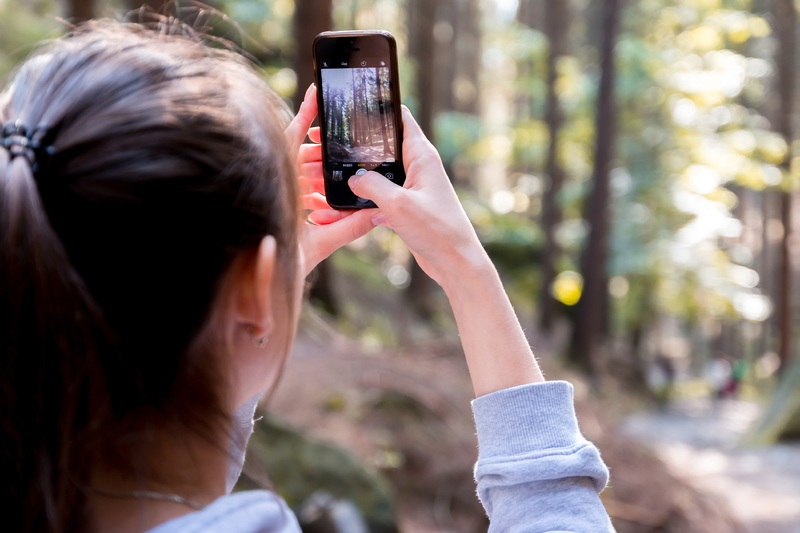
Cold weather can quickly deplete battery power or, even worse, permanently damage your electronics.
Store your electronics, batteries, fuel cans, and anything else you don’t want to see frozen in the foot of your sleeping bag (buy a slightly longer sleeping bag for this purpose).
Your electronics have maximum and minimum storage and operating temperatures, so it’s wise to check them before you go out into nature.
Operating or charging an electronic device outside its specified temperature range can cause irreparable damage.
16. Don’t expose yourself to hypothermia and frostbite

You’re all ready to get out and go, but there’s something else to cover up before you tackle the snow garbage: safety. As every backcountry expert knows, no one is immune to the cold.
Indeed, dealing with weather-induced sickness is a big part of any cold weather camping tips checklist.
It’s important not only to equip yourself with the necessary equipment for your mission, but also to equip yourself with the knowledge necessary for your safety and survival.
What are the signs and symptoms of moderate to severe hypothermia?
Conditions are extreme and you expect to be cold, but when is it too cold? Our body regulates itself best at 37°C (98.6°F), so hypothermia is a real risk when our core temperature drops below its safe level.
Here are the signs and symptoms of moderate to severe hypothermia:
Chills that eventually disappear as the condition worsens
Poor and worsening coordination
Poorly articulated speech
Confusion and cognitive impairment
Thready or weak pulse
Sleepiness and lethargy
Bradypnea or slowed breathing
Shallow breathing
Apathy
What are the signs and symptoms of frostbite?
Frostbite usually affects the extremities like fingers, toes, ears, nose, chin, and cheeks. The skin surface in contact with wind or extreme cold is more likely to frostbite, although protected skin can also catch it.
The first stage of frostbite:
The first stage of frostbite, also called frostbite, is reversible and will not cause serious tissue damage. This stage is characterized by pallor, slight tingling, and numbness in the affected areas.
The intermediate stage of frostbite:
The intermediate stage of frostbite, also known as superficial frostbite, is when the skin remains soft but becomes slightly damaged.
Discoloration of the skin may be visible, and water blisters may appear after warming in the first 24-48 hours.
Advanced frostbite:
Severe frostbite is a medical emergency and is characterized by cold, hardened skin, loss of feeling, permanent nerve damage, and cell death.
The affected skin may be blue or black. Severe cases may require amputation of affected areas.
First Aid for Frostbite:
Get immediate help
Get the person to the hospital as quickly as possible.
Moving to a warm and sheltered place
Elevate the affected area
Do not step on affected toes or feet.
Remove cold clothing
Do not massage the affected skin
Give the person a hot drink (non-alcoholic)
Apply a sterile and dry bandage for first aid.
Use a first-aid bandage or cotton balls to separate the affected fingers.
Do not heat the affected area if there is a risk of re-freezing.
In case of danger, use body heat or warm (not hot) water to warm the area.
Bonus Tip: A few words of encouragement will give a boost to any listening ear.
Dear backcountry campers in cold weather: you know who you are. You’re frothing at the sight of a sinister peak and staring at the trees through your work window, imagining the pines and the high altitude.
Your best memories are those you moments experience watching a jumping rainbow trout at dusk, or perhaps hearing the sound of a soft snowfall on a quiet night.
You are a child of nature, and adventure feeds your soul. Whatever you do, wherever you go, play it safe, follow this cold weather camping tips checklist, and remember to trust your intuition.






